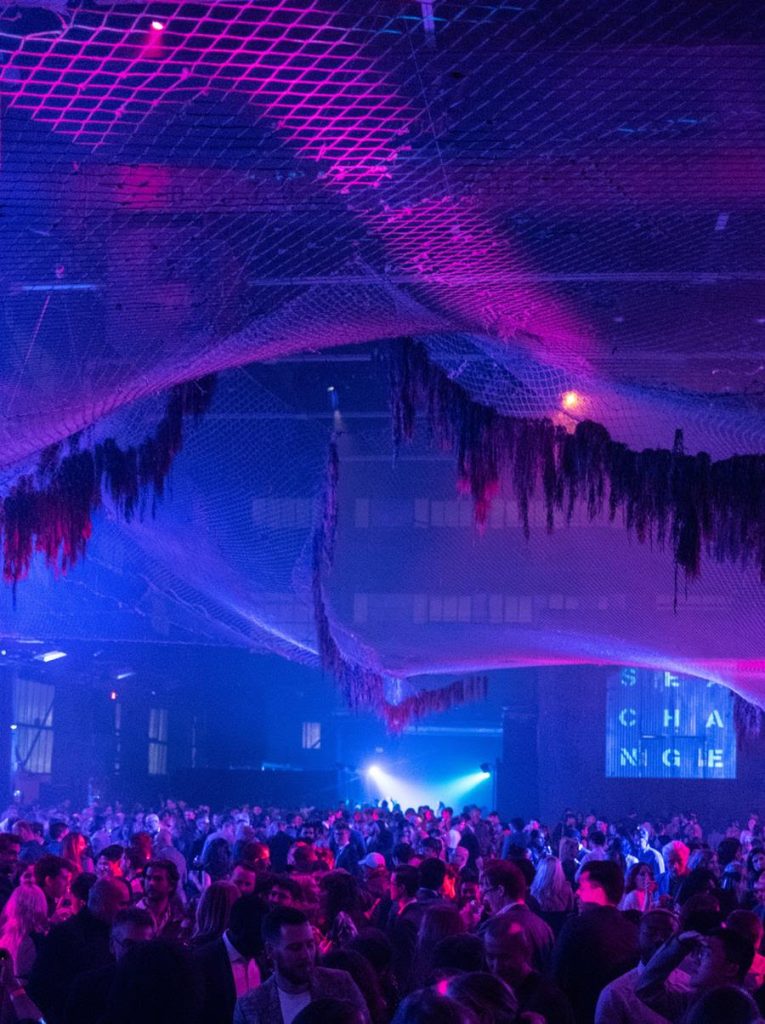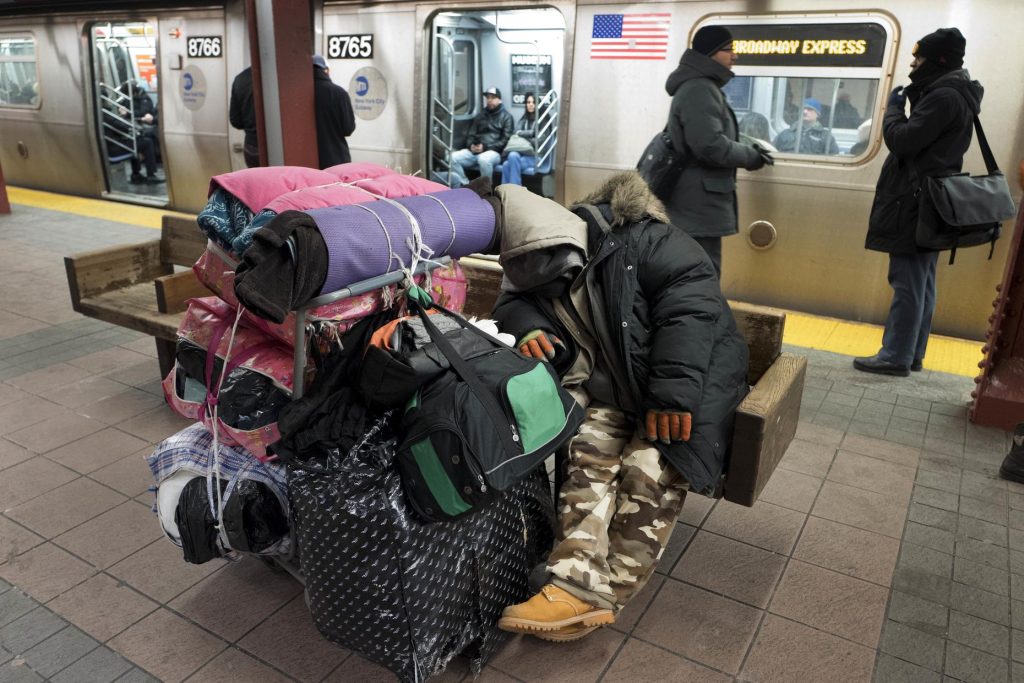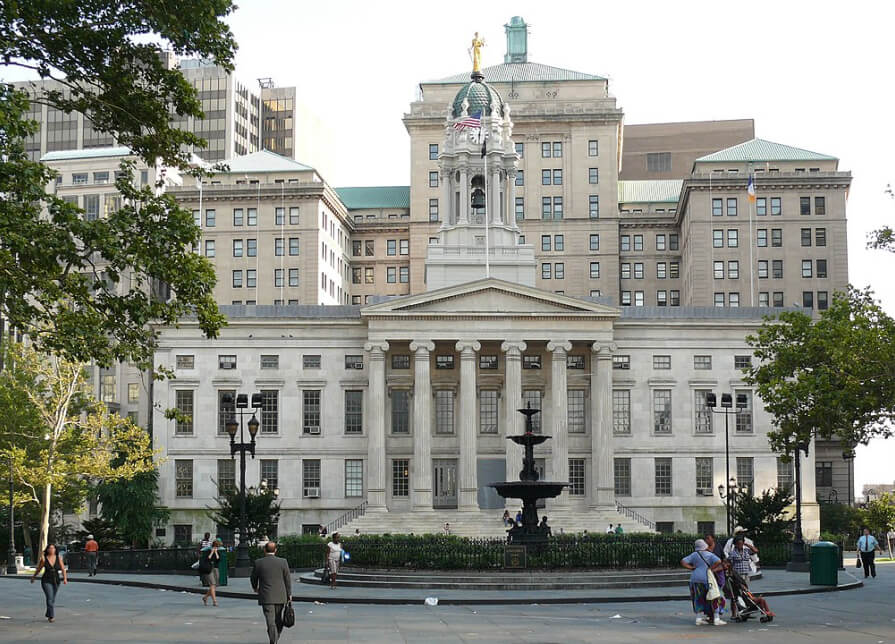If the products and processes are healthy, they can benefit both us and our planet.
RUTH MANDL
I just got back from the Build Reuse conference buzzing with new vigor and new ideas. The event, organized by a group dedicated to “empowering communities to turn construction and demolition waste into local resources” brings together deconstruction teams, salvagers, policy makers, academics, designers and architects, all working towards the monumental goal of steering our economic model from a linear concept of extraction, use, and waste, to a circular one which recognizes the immense potential and value of the materials already in our midst. I was beyond inspired and hopeful for ways we can work together to solve these challenges.

Speaking at the AIA Women in Circularity Event (Credit: From Video)
Two weeks before that, I was invited to speak on a panel at the Center for Architecture titled “Women in Circularity” part of the AIA New York’s Leaning Out Series. The panelists brought a global perspective to the discussion, speaking to their beautiful work in places like Ghana, Paraguay, and Jordan that underlined larger themes at play when thinking about circularity. Themes that re-merged at the conference and that I carry with me as we dive into 2024, filled with equal amounts of uncertainty and hope: Circularity requires collaboration; due to the need to focus on our hyper local cycles, it demands rigorous engagement with our community. It is both a return to tradition, and an expansion of ancient ancestral knowledge; a restoration of our reliance on local craft and making. It necessitates a changed perception about time; longevity, temporality and flexibility. In the words of Buckminster Fuller, taken from the immensely inspiring keynote speech at the Reuse Conference by Eden Brukman:
“You never change things by fighting the existing reality. To change something, build a new model that makes the existing model obsolete.“

Insulation at our office (Credit: Joanne Yau)
Some other news we’re excited to share with you: We started the year off with receiving an entire trailer load of TimberHP’s loose fill wood fiber insulation. TimberHP is a new company in Maine that turns leftover wood chips from lumber production and wood waste from sustainable forest management practices into insulation. Previously, this type of healthy, renewable insulation could only be imported from Europe, and with TimberHP hitting the market at the same price point as foam, we are proud to have placed their first big order here in NYC, and are now working to spread the word – convincing local insulation suppliers to stock it so that we don’t have to.

Installation of TimberHP at our Classic Passive House in Carroll Gardens – Hempitecture in the background. (Credit: Liam Higgins)
In November, we were awarded the MASterworks award for Adaptive Reuse for our Timber Adaptive Reuse Theater. This project is very special to us, because it embodies many of our values around reuse, both at the building scale and the material level. We are honored to receive this award, and for the project to continue to lead by example, underlining the importance of keeping embodied carbon locked in our buildings and cities is key to tackling climate change.In October of last year, we presented our Timber Adaptive Reuse Theater to Architect’s Declare, as part of their Adaptive Future’s lecture series. The discussion and questions that followed the lecture were thought-provoking and we are excited to continue our engagement with this exceedingly important collective.

Masterworks Award (Credit: Bobby Johnston)
In September, CO Adaptive unveiled our design for the Architectural League’s Beaux Arts Ball, held in our neighboring Navy Yard Building 269. Created from textural and colorful fishing nets alongside rockweed, our installation emphasized an entirely circular use of materials. We sourced the fishing net from Net Your Problem, which collects used nets from fisheries in Massachusetts, and sent them to recyclers who reused them in new product manufacturing after the installation was taken down. Hanging from the tented nets, and providing beautiful natural undulations, the rockweed was sourced locally through Lobster Place. After the Ball, the rockweed was donated to local urban farms to be composted and added to garden beds, where it increases nitrogen. We could not have created this installation without the support of the local community. The fact that the day of the Ball marked an unprecedented rain event here in NYC only underlined the importance of this work.

Last but not least, Bobby and I taught our first studio at our alma mater GSAPP last semester. Our Advanced V curriculum was titled “Industry of Waste” and focused on thinking about circular systems within NYC. Some really inspiring projects came out of it, showcasing how we can mix manufacturing into our city if we are aware of what we are working with. If the products and processes are healthy, they can benefit both us and our planet. By reducing the lengths of the loops that materials need to traverse, we reduce the additional resources they need to consume, and invite craft and making back into our city.I feel so eternally grateful to be operating within such a committed and dedicated community, who are all working tirelessly to affect change within our built environment. Though it may be a bubble, it is a growing one. As my wise father reminded me this weekend – all change ultimately starts in a bubble.




